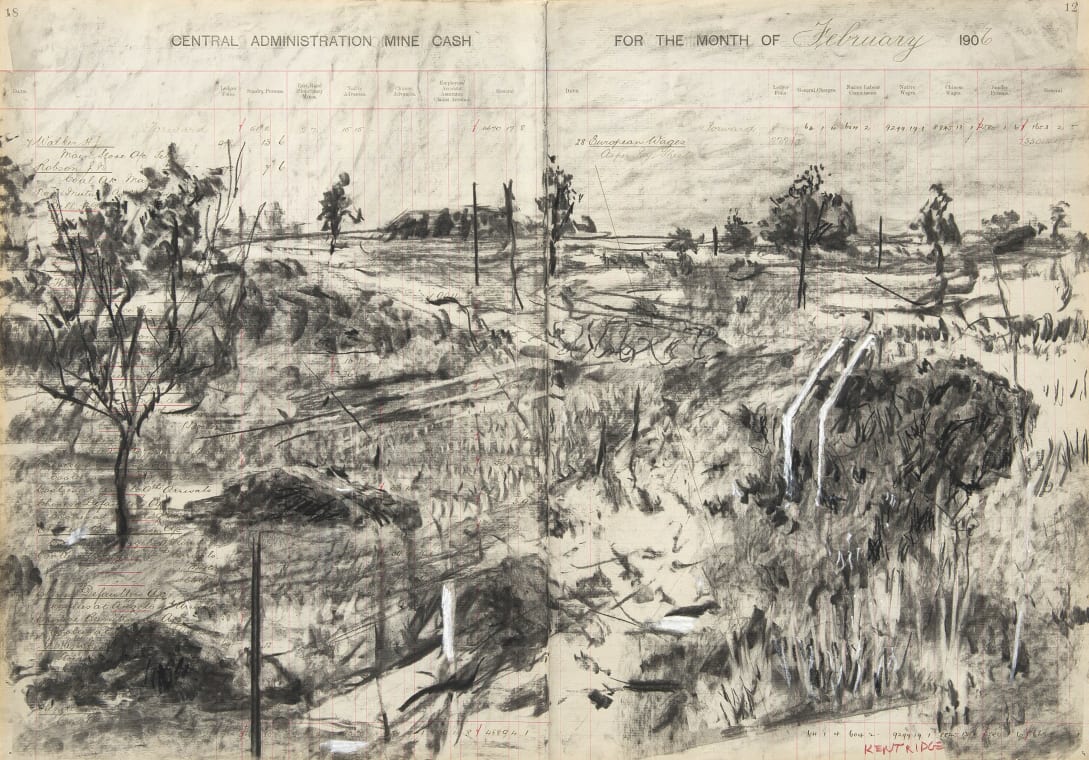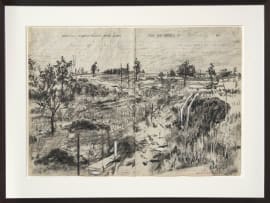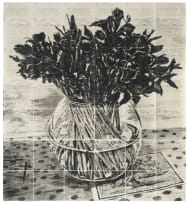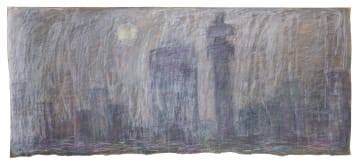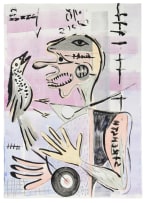Curatorial Voices: Modern and Contemporary Art from Africa
Live Virtual Auction, 28 February 2023
Curatorial Voices: Modern and Contemporary Art from Africa
About the SessionCuratorial Voices: Modern and Contemporary Art from Africa is a dynamic collaborative project conceived by Strauss & Co to address the need for diversified representation of artists from across the African continent in the secondary market. Curated by Strauss & Co Heads of Sale, Kirsty Colledge and Kate Fellens, with input by seven international art experts with embedded knowledge of Africa; Serge Tiroche, Valerie Kabov, Heba Elkayal, Danda Jaroljmek, Anne Kariuki, Dana Endundo Ferreira, Kimberley Cunningham. Curatorial Voices presents collectors with a broad selection of work by leading contemporary artists alongside select pieces by important historical artists.
About this Item
signed
Notes
Mining landscapes are an important subject of William Kentridge's drawing output. "I started calling myself an artist in my thirties when I discovered not just the necessity but the pleasure of drawing the landscape just to the south of Johannesburg," Kentridge has said. "And also when I discovered the pleasure of a soft chamois leather dipped into charcoal dust and wiped across the white surface of the paper, leaving not just a train of dark charcoal grit on the paper but also of a darkening sky above a light horizon."1 These discoveries prompted Kentridge to pay concentrated attention to the ravaged mining landscapes south of his home.
These two lots form part of a suite of 45 drawings executed over a three-year period and first exhibited in 2014. The drawings depicted mining landscapes along the south edges of central Johannesburg and on the platinum belt 120km northwest of the city. Most of the drawings were composed on a 1906 cashbook used by clerks at East Rand Proprietary Mines, a storied goldmine 25 km east of central Johannesburg. More than the mere substrate, these ledger entries are repositories of labour history and potent signifiers of the complications attached to South Africa's mineral bounty. The suite of drawings included a study of a low hill near a platinum mine in the Marikana area, where police killed 34 striking miners in August 2012.
These two lots portray unidentified landscapes typical of what novelist Nadine Gordimer pithily summarised as southern Johannesburg's "industrial rusticity".2 Like Gordimer, Kentridge's understanding of South Africa's anti-Arcadian landscapes is visceral and cerebral, poetic and forensic. Writing in the book accompanying Kentridge's lauded 2022 exhibition at London's Royal Academy, literary scholar Stephen Clingman summarises the heft of these drawings as follows: "They are landscapes conceived in charcoal, a universe of black, grey and white, with theodolitic markings of blue or pink, a history of measurement and subjection. Kentridge does for Johannesburg what Faulkner did for Mississippi, Joyce for Dublin, or Dante for the afterlife. Seeing the images, we are in Kentridge's world, a place at once real, surreal and mythological, where the ghosts of the past and present are shadowed and etched."3
1. William Kentridge & Jane Taylor (2018) That Which We Do Not Remember, Sydney: Naomi Milgrom Foundation, page 102.
2. Nadine Gordimer (1974) The Conservationist, London: Jonathan Cape, page 255 (1983 Penguin edition).
3. Stephen Clingman (2022) William Kentridge, London: Royal Academy of Arts, page 42.
After studying Political Science at Wits in the late 1970s William Kentridge studied the art of mime in Paris in the early 1980s. He now continually combines these interests in his art. His phenomenal drawing skills were sharpened while studying at the Johannesburg Art Foundation and, in the numerous stop-frame video animations of the 1990s and the large-scale installations of the early twenty-first century, he dramatically renders the effects of colonialism on the oppressed. Regularly mounting major exhibitions and dramatic productions, locally and internationally, he is the recipient of numerous local and international awards and is the true embodiment of Contemporary African Art.
Provenance
Goodman Gallery, 2014.
Private Collection.
Exhibited
Goodman Gallery, Johannesburg, Drawings: East Rand Proprietary Mines Cash Book, 15 November - 18 December 2014, illustrated in the exhibition catalogue, unpaginated.
Literature
Rosalind C Morris and William Kentridge (2015) Accounts and Drawings from Underground: East Rand Propriety Mines Cash Book, 1906, India: Seagull Books, illustrated in colour, unpaginated.
